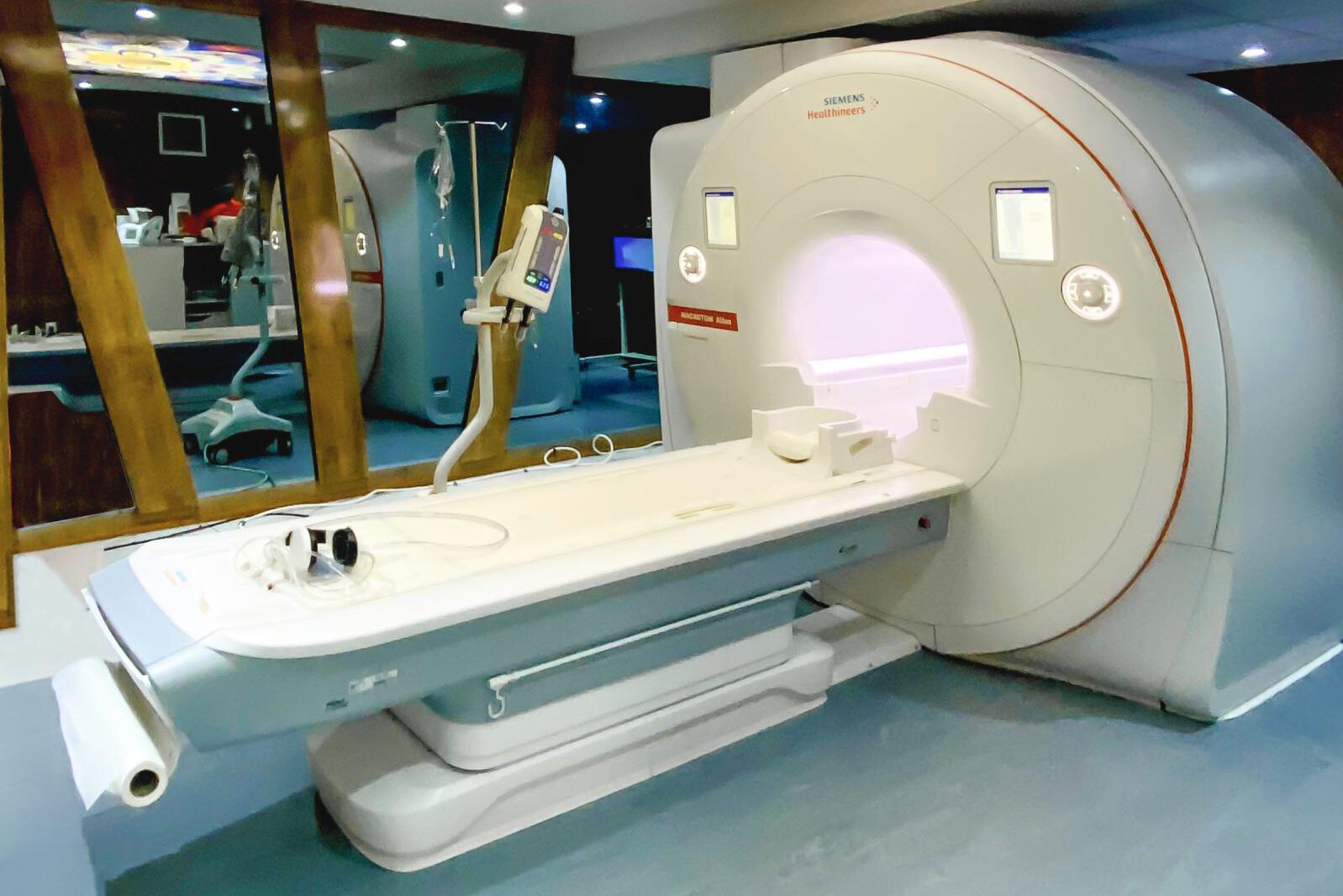The rapid progress in technology ensures the development of solutions in the field of health to extend the human life. Thanks to advanced imaging technologies, many diseases can be diagnosed in advance now and, effective treatments can be applied by correct diagnosis’.
Magnetic Resonance (MR) is one of the first methods that come to mind considering imaging technologies.
MRI is deemed as the most widely used imaging method today in the diagnosis of certain diseases in a fast and effortless manner, in the post-treatment follow-up of patients and within the scope of check-up procedures.
Since MR imaging procedure does not involve radiation, it also comes forward as a healthy and reliable method. Patients are exposed to high amounts of radiation in PET/CT used in cancer evaluation. However, neither radiation nor any medication are used in whole-body MRI. In addition to that, as an alternative to the functional evaluation used in PET/CT, functional evaluation can be made using diffusion images in whole-body MRI.
Whole-body MRI, as its very name signifies, is a detailed scanning of the patient’s body in a single session.
Whole-body MRI examines the brain, neck, the organs in the thoracic cage, abdominal organs, the spine and all the bones and soft tissues up to the middle of the thigh. The most important advantage of whole-body MR imaging is that many diseases can be diagnosed early.
Who should have a whole-body MRI?
Whole-body MR imaging is suitable for patients in the cancer risk group, cancer patients and those who want to have a general check-up.
- With this method it is ensured that possible tumor formations in the whole-body are diagnosed and detected at an early stage in patients in the cancer risk group.
- Thanks to whole-body MRI, which is also preferred by cancer patients, it is possible to evaluate the stage of the disease and determine whether it has metastasized. It has an important place in evaluation of response to treatment in cancer patients receiving treatment.
- People who want to have their general health status checked once a year can also have many procedures that fall under the scope of general check-up in a single session thanks to a whole-body MRI.
How is the MRI scan performed?
Whole-body MRI is a very simple and effortless procedure for the patient. Patients lie inside the MRI device by wearing metal-free clothing or a patient gown.
The examination takes approximately 45-50 minutes. During this time, patients should stand as still as possible to ensure proper imaging.
While the patient is lying down, the moving table of the MRI device scans gradually from brain to the other parts of the body. In the scanning of some areas, patients are also asked to hold their breaths at short intervals.
Because MRI devices are also developed according to advanced technology, patients have a much more comfortable experience than before.
Era Radyoloji provides its patients with an environment where they will feel comfortable with the large and spacious interior volume of the new generation MRI device with high quality and clarity imaging capability. Patients can also watch movies, documentaries or videos during the MRI scan.
Why you should have a whole-body MRI?
- Whole-body MRI covers a wide area.
- It is possible to view the whole-body in a single session through this method.
- Patients are not exposed to radiation in MRI.
- Contrast agent is not used in whole-body MRI.
- Compared to other imaging techniques, patients are not required to fast for a certain time or have bladder congestion.
- It helps to detect tumors and cancer formations at an early stage.
- Because it does not involve any risks and has no side effects, it can be applied to patients of all age groups 7 and above.
- The very precise, sharp and detailed imaging of especially soft tissues are possible with this method.


